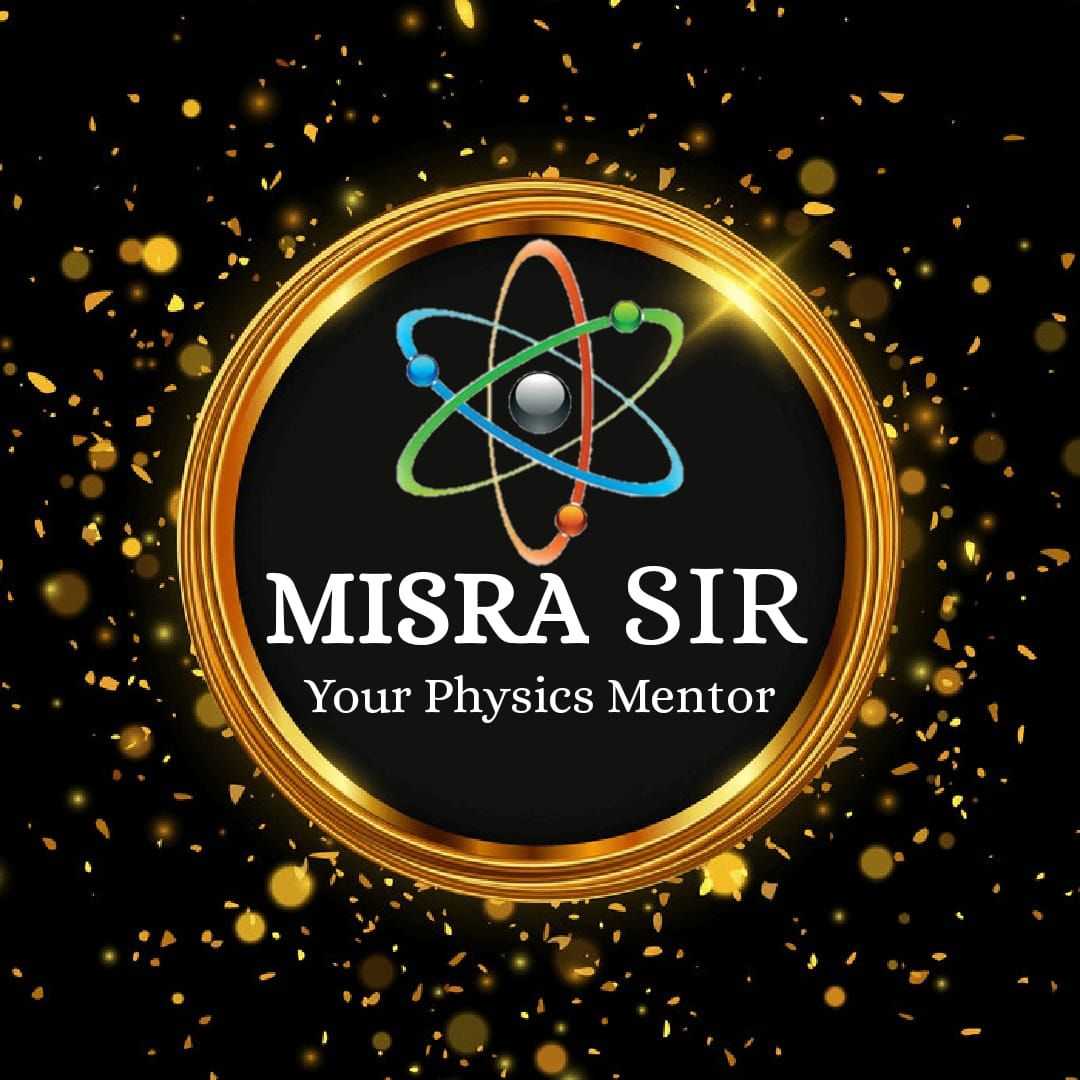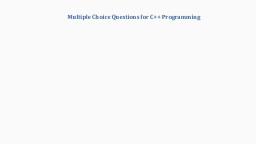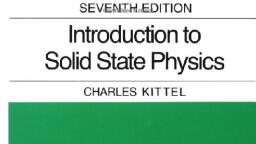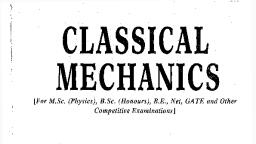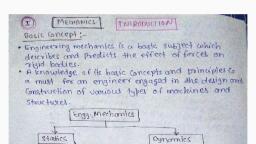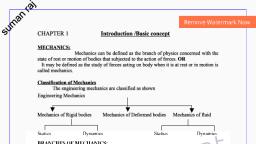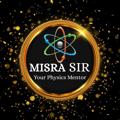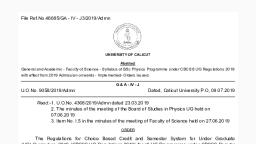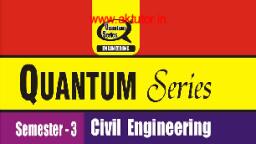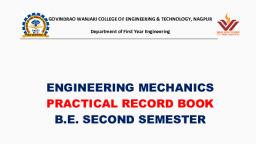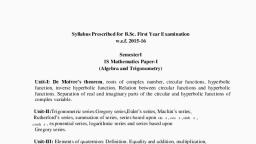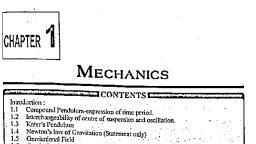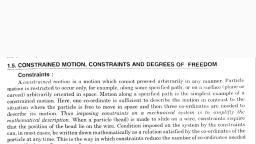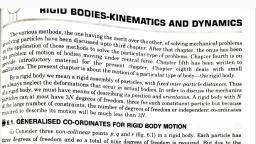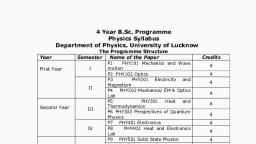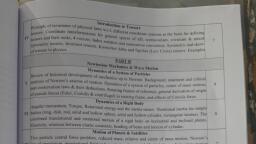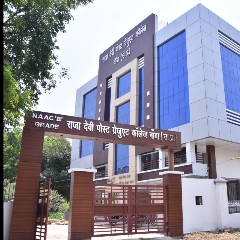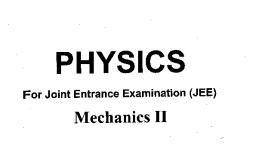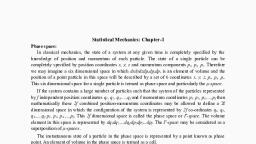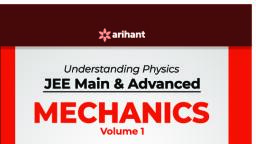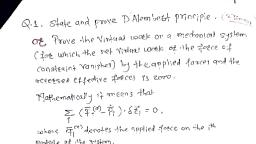Page 2 :
CLASSICAL MECHANICS, , THIRD EDITION, , Herbert Goldstein, , Columbia University, , Charles Poole, University of South Carolina, , John Safko, , University of South Carolina, , Addison, W, , , , San Francisco Boston New York, Capetown HongKong London Madrid Mexico City, Montreal Munich Paris Singapore Sydney Tokyo Toronto
Page 3 :
CLASSICAL MECHANICS, , THIRD EDITION, , Herbert Goldstein, , Columbia University, , Charles Poole, University of South Carolina, , John Safko, , University of South Carolina, , , , San Francisco Boston New York, Capetown HongKong London Madrid Mexico City, Montreal Munich Paris Singapore Sydney Tokyo Toronto
Page 4 :
Contents, , 1 @ Survey of the Elementary Principles 1, , 11, , Mechanics of a Particle 1, , 1.2 Mechanics of a System of Particles 5, 1.3 Constraints 12, 14 D’Alembert’s Principle and Lagrange’s Equations 16, 15 Velocity-Dependent Potentials and the Dissipation Function 22, 1.6 Simple Applications of the Lagrangian Formulation 24, 2 @ Variational Principles and Lagrange’s Equations 34, 2.1 Hamilton’s Principle 34, 2.2 Some Techniques of the Caiculus of Variations 36, 2.3 Derivation of Lagrange’s Equations from Hamilton’s Principle 44, 2.4 — Extension of Hamilton’s Principle to Nonholonomic Systems 45, 2.5. Advantages of a Variational Principle Formulation 51, 2.6 Conservation Theorems and Symmetry Properties 54, 2.7 Energy Function and the Conservation of Energy 60., 3 Mf The Central Force Problem 70, 3.1 Reduction to the Equivalent One-Body Problem 70, 3.2 The Equations of Motion and First Integrals 72, 3.3. The Equivalent One-Dimensional Problem, and, Classification of Orbits 76, 3.4 The Virial Theorem 8&3, 3.5. The Differential Equation for the Orbit, and Integrable, Power-Law Potentials 86, 3.6 Conditions for Closed Orbits (Bertrand’s Theorem) 89, 3.7 The Kepler Problem: Inverse-Square Law of Force 92, 3.8 The Motion in Time in the Kepler Problem 98, 3.9 The Laplace-Runge—Lenz Vector 102, 3.10 Scattering in a Central Force Field 106, 3.11 Transformation of the Scattering Problem to Laboratory, Coordinates 114, 3.12 The Three-Body Problem 121
Page 5 :
vi Contents, , 4 i The Kinematics of Rigid Body Motion 134, , 4l, , The Independent Coordinates of a Rigid Body 134, , 42 Orthogonal Transformations 139, 4.3 Formal Properties of the Transformation Matrix 144, 44 TheEuler Angles 150, 4.5 The Cayley-Klein Parameters and Related Quantities 154, 4.6 Euler’s Theorem on the Motion of a Rigid Body 155, 4.7 — Finite Rotations 161, 4.8 Infinitesimal Rotations 163, 4.9 — Rate of Change of a Vector 171, 4.10 The Coriolis Effect 174, 5 Ml The Rigid Body Equations of Motion 184, 5.1 Angular Momentum and Kinetic Energy of Motion, about a Point 184, 5.2 Tensors 188, 5.3 The Inertia Tensor and the Moment of Inertia 191, 5.4 The Eigenvalues of the Inertia Tensor and the Principal, Axis Transformation 195, 5.5 Solving Rigid Body Problems and the Euler Equations of, Motion 198, 5.6 Torque-free Motion of a Rigid Body 200, 5.7 The Heavy Symmetrical Top with One Point Fixed 208, 5.8 Precession of the Equinoxes and of Satellite Orbits 223, 5.9 Precession of Systems of Charges in a Magnetic Field 230, 6 @ Oscillations 238, 6.1 Formulation of the Problem 238, 6.2 The Eigenvalue Equation and the Principal Axis Transformation 241, 6.3 Frequencies of Free Vibration, and Normal Coordinates 250, 6.4 — Free Vibrations of a Linear Triatomic Molecule 253, 6.5 Forced Vibrations and the Effect of Dissipative Forces 259, 6.6 Beyond Small Oscillations: The Damped Driven Pendulum and the, , Josephson Junction 265, , 7 @ The Classical Mechanics of the, , Special Theory of Relativity 276, 7.1 Basic Postulates of the Special Theory 277, , 7.2 Lorentz Transformations 280, , 7.3 Velocity Addition and Thomas Precession 282, , 14, , Vectors and the Metric Tensor 286
